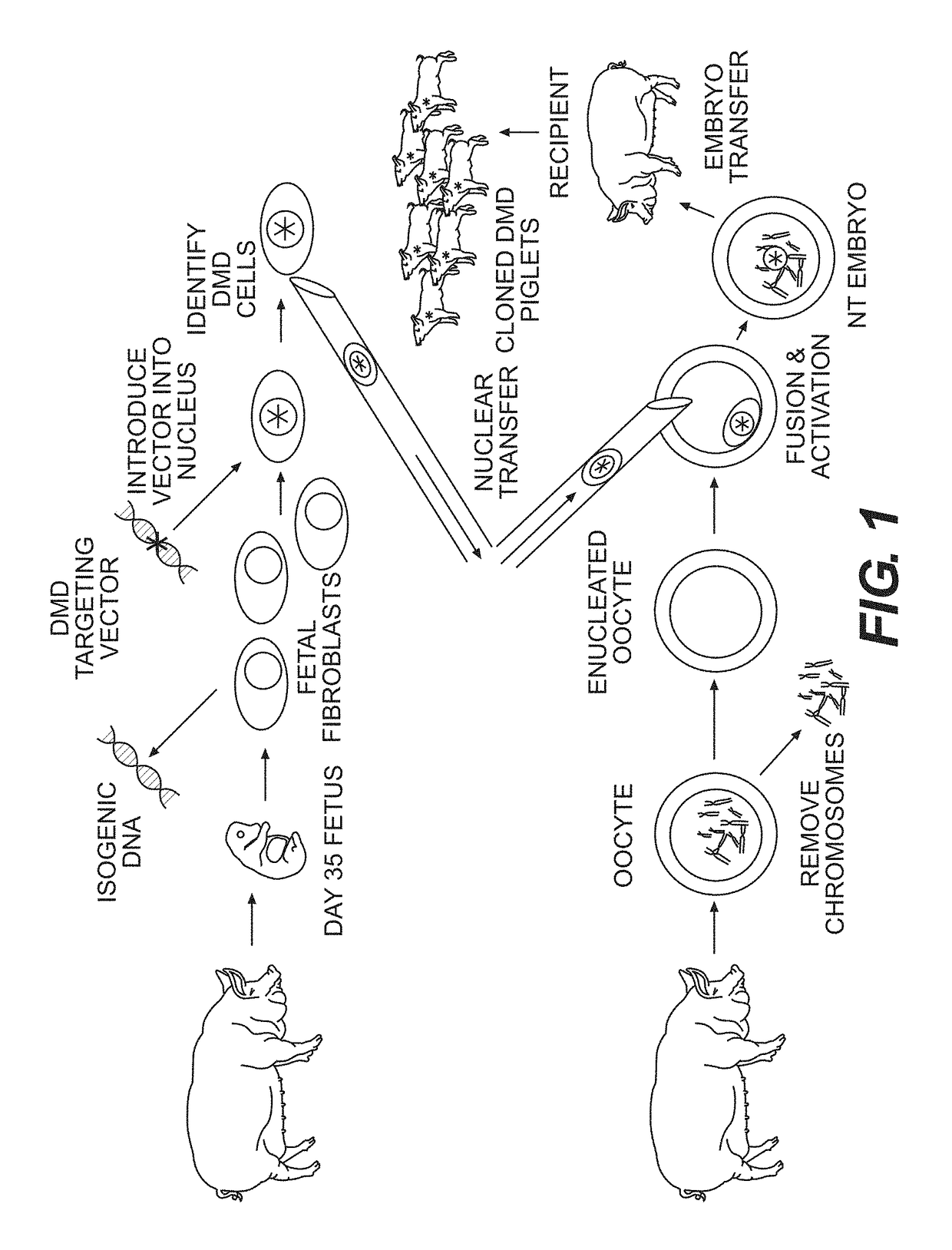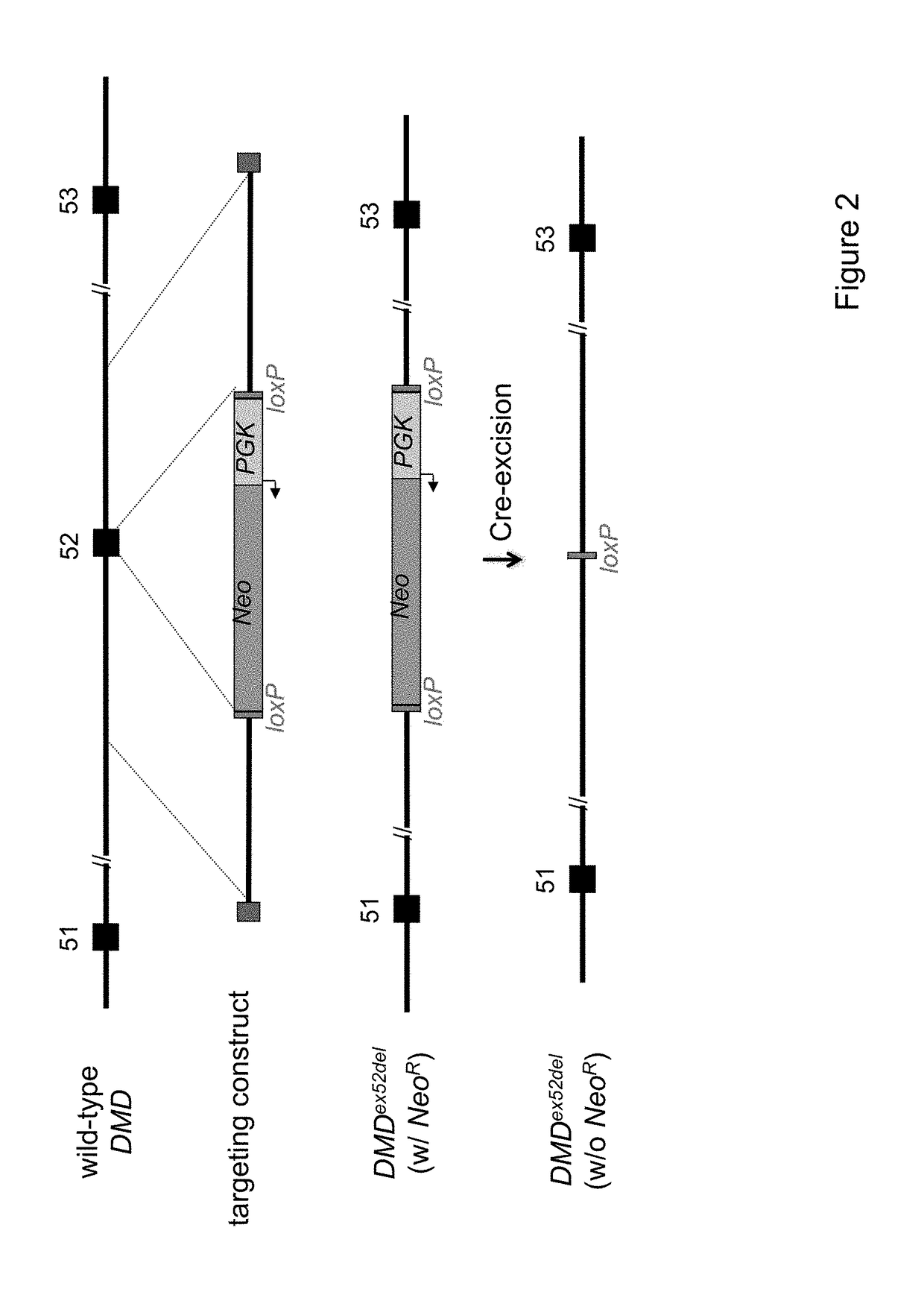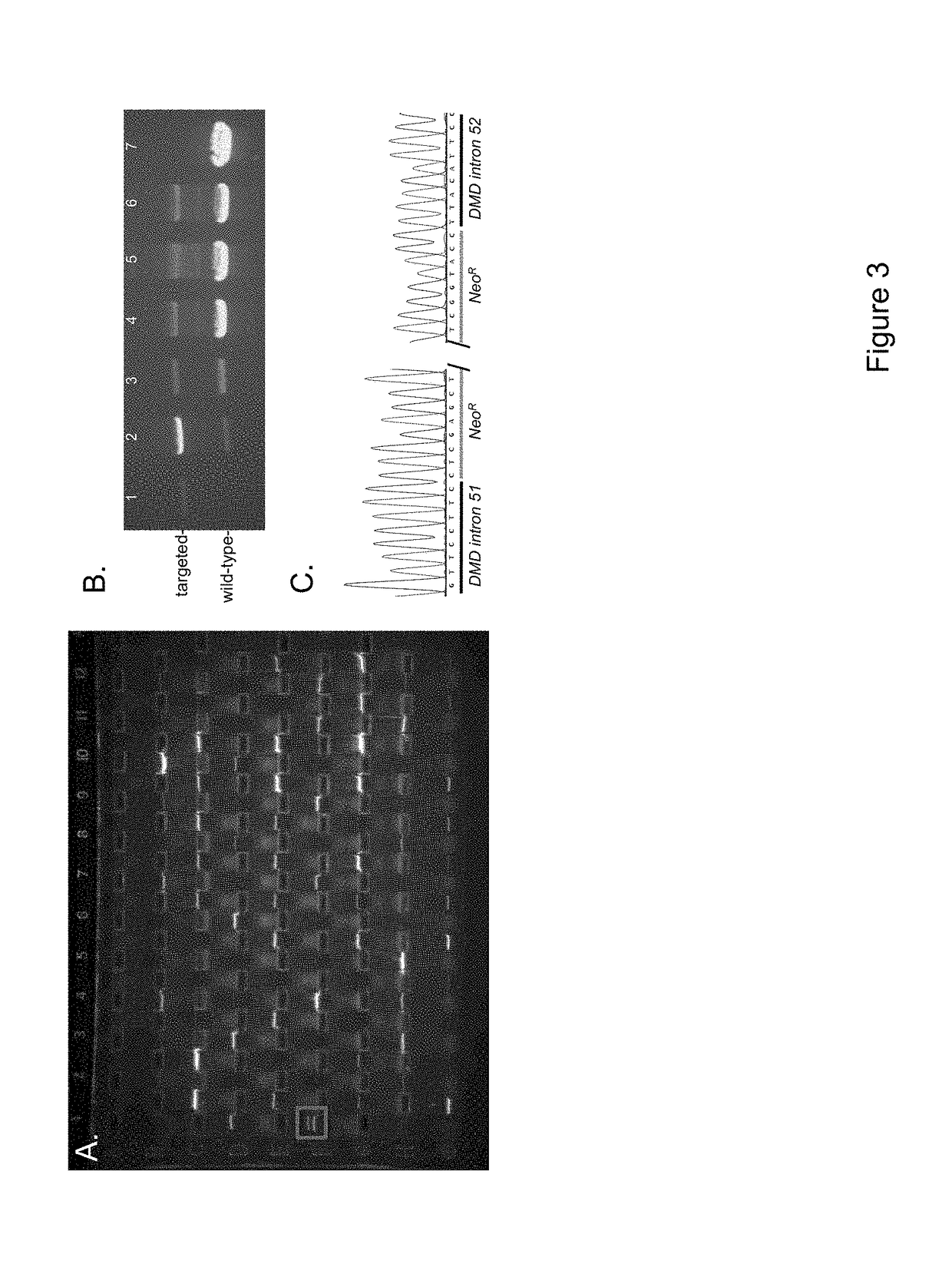Animal models of duchenne muscular dystrophy
a duchenne muscular dystrophy and animal model technology, applied in the field of transgenic, nonhuman animal model of disease, cells, etc., can solve the problems of muscle tissue wasting, fibrosis, and difficulty in standing, and achieve the effects of reducing phenotypic variability, reducing the usefulness of therapy developed in the dog, and improving social acceptan
- Summary
- Abstract
- Description
- Claims
- Application Information
AI Technical Summary
Benefits of technology
Problems solved by technology
Method used
Image
Examples
experimental examples
Example 1
Yucatan Miniature Pigs and Cells for Gene Targeting
[0086]The Yucatan miniature pig was selected for development of a DMD model. While it possesses the same biological characteristics as domestic pigs, the Yucatan miniature pig is significantly smaller. Most domestic pig breeds reach 100 kg in less than six months and can achieve weights of 250-300 kg within a few years. Yucatan miniature pigs reach a full-grown size of 65-90 kg at two years of life, which is more similar to an adult human. Therefore, the Yucatan miniature pigs are less expensive to house and feed. Additionally, this breed is more docile in nature and better suited for interactions with researchers. See, e.g., Panepinto, L. M., et al., Lab Anim Sci 1986, 36 (4), 344-7.
[0087]Due to the lack of suitable porcine embryonic stem cell lines, the standard methods for producing gene-targeted mice are not applicable in pigs (Piedrahita, J. A., Theriogenology 2000, 53 (1), 105-16). Instead, gene targeting must be achi...
example 2
Creation of a DMD Targeting Construct
[0088]As mentioned above, porcine DMD has been sequenced and annotated, and the genomic structure is similar to the human gene. Homologous recombination was used to delete exon 52 (ex52del) from porcine DMD (DMDex52del). Exon 52 is one of several “hotspot” exons (exons 45-55) that are commonly deleted in DMD patients (see, e.g., Hoffman, E. P., et al. Science 1987, 238 (4825), 347-50; Yokota, T., et al. Ann Neurol 2009, 65 (6), 667-76. This particular deletion provides a widely applicable DMD model that will allow studies focused on both disease pathogenesis related to dystrophin-deficiency and the development of new therapeutic interventions designed to restore function to diseased muscle.
[0089]The deletion of exon 52 results in a frameshift mutation that yields a prematurely truncated and non-functional protein. This may also induce the nonsense-mediated mRNA decay processes. In either event, no functional dystrophin protein is expected to be p...
example 3
Using Recombinant AAV Vectors to Target the Porcine DMD Gene
[0092]Because of rAAV genome size constraints, the total length of the targeting vectors was limited to about 4.5 kb. The 1.7 kb NeoR was centrally located in the targeting vector, with each homology arm being ˜1.4 kb (FIG. 2).
[0093]A plasmid carrying the DMDex52del targeting vector was generated using standard molecular biology techniques. Proper sequence was confirmed by DNA sequence analysis. The plasmid was then submitted to the University of Iowa Gene Transfer Vector Core for production of recombinant adeno-associated virus (rAAV). rAAV was chosen because it has been used to efficiently deliver gene targeting vectors to cell lines and primary cells (Meyerholz, D. K., et al., Am J Respir Crit Care Med 2010, 182 (10), 1251-61). Additionally, rAAV has previously been used to engineer specific mutations in porcine CFTR and LDLR. See, e.g., Rogers, C. S., et al., J Clin Invest 2008, 118 (4), 1571-7; Rogers, C. S., et al., S...
PUM
| Property | Measurement | Unit |
|---|---|---|
| weights | aaaaa | aaaaa |
| weights | aaaaa | aaaaa |
| size | aaaaa | aaaaa |
Abstract
Description
Claims
Application Information
 Login to View More
Login to View More - R&D
- Intellectual Property
- Life Sciences
- Materials
- Tech Scout
- Unparalleled Data Quality
- Higher Quality Content
- 60% Fewer Hallucinations
Browse by: Latest US Patents, China's latest patents, Technical Efficacy Thesaurus, Application Domain, Technology Topic, Popular Technical Reports.
© 2025 PatSnap. All rights reserved.Legal|Privacy policy|Modern Slavery Act Transparency Statement|Sitemap|About US| Contact US: help@patsnap.com



